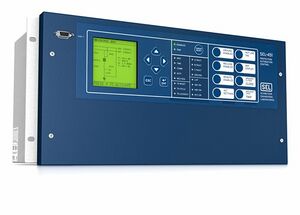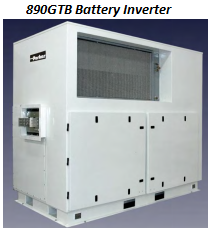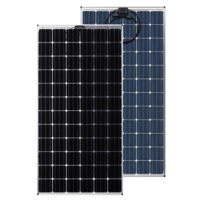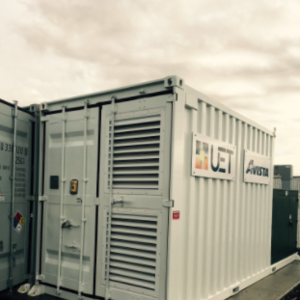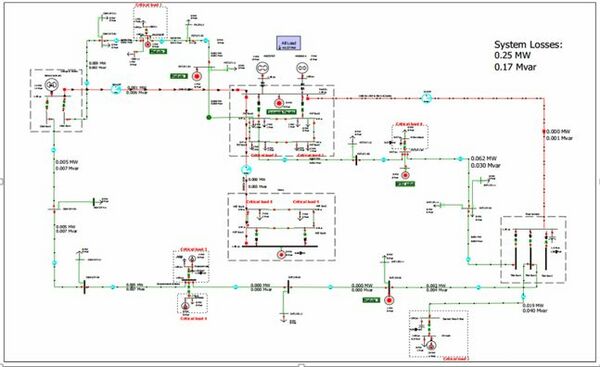Spokane Microgrid Distributed Generation and Storage
| Sponsors | Avista Utilities |
| Team Name | Smart Spokane |
| Duration | Fall 2016 - Spring 2017 |
| Faculty Advisors | Dr. Herb Hess |
| Graduate Advisor | Jordan Scott |
| Students | |
Our mission is to augment the existing distributed generation and energy storage in downtown Spokane. The two main goals are "improved use of existing assets" and "adding new generation and storage." Some sub goals are investigating market options for distributed generation and storage, finding locations for new assets, and connecting them to the electrical grid.
Our team is 1 of 3 teams at the University of Idaho who are working with Avista Utilities to develop a microgrid in the downtown area of Spokane, WA. The other two teams are the Master Controller team and the Automated Generator Controller (AGC) team.
Problem Definition
Background
On November 17, 2015, a strong windstorm hit the city of Spokane. The strong winds severed the power transmission lines from the Columbia River generating stations. After a long four weeks, Avista Utilities, the local electric power utility, fully restored power service.
Proposed Solution
Avista Utilities is working with federal programs such as Smart Cities to develop a Smart grid for Spokane. As a part of the Smart grid package, a microgrid will be developed for the downtown area. These developments will improve reliability of the power service thus raising the level of quality service, and also decrease cost caused by blackouts.
- Smart Grids
According to smartgrid.gov, a smart grid is an electrical grid that has been integrated with modern digital technology to allow it to sense and respond to changes in electric demand. Thus it creates a "two-way communication between the utility and its customers." This communication and response becomes increasingly important as more customers contribute to the grid power generation with such renewable energy generators as solar panels.
- Microgrids
The U.S. Department of Energy (DOE) defines a microgrid as a group of interconnected loads and distributed energy resources within a clearly defined electrical boundaries that acts as a single controllable entity with respect to the grid. A microgrid can connect and disconnect from the grid to enable it to operate in both grid-connected or islanded-mode (1).
Project Goals
- Determine appropriate market options for distributed generation, energy storage, and the included grid connections
- Determine an appropriate method to increase use of existing assets
- Find and map suitable locations for the distributed generation and energy storage
- Further the project model in PowerWorld
Specifications
| Category | Trait | General Description | Target Values |
|---|---|---|---|
| Hospital Generators | Fuel | Change Fuel to Reduce Environment Impact of Fuel Exhaust | 70% Natural Gas / 30% Diesel |
| Grid-tie Inverters | Synchronization | Can synchronize a site to the main grid | Yes |
| Efficiency | Power losses in the inverter | 98.7% max | |
| Solar | Modules | Modularize rooftop locations for ease of implementation | Minimum: 3 Modules |
| Snow Capacity | Ability to handle X lbs (or Y in) of snow and ice accumulation | 30 lbs. per sq. ft. | |
| Energy Storage | Location Accessibility | The locations need to be accessible for moving the freight containers | At least 1 block away from "major" traffic |
| Turn Around Efficiency | Loss of energy suffered from a charge/discharge cycle | Efficiency greater than 70% |
Deliverables
- Datasheets of listed materials and items
- Recommended Diesel Generator Conversion kit and estimated price table
- Google Earth map of recommend locations for the solar panels and battery banks
- Recommended grid connections
- Model and Low-scale simulation of the design in Powerworld
The Design
Integrating and Improving Existing Assets
Fuel Conversion
A cost effective way to increase generation is to improve the existing generators.
There are at least 18 generators that are being underutilized. These are the diesel back-up generators in the three main Spokane hospitals, Deaconess, Sacred Heart, and Shriners. The core reason that these generators are being underutilized is that the operation time is severely limited by environmental standards. Therefore to increase the potential generation requires reducing the environmental impact of the fuel exhaust.
One simple way to reduce impact of the generator exhaust is to switch fuels. Natural gas burns cleaner than diesel and is readily available in Spokane. This switch requires a diesel to natural gas conversion kit.
Two companies that offer such diesel to natural gas conversion kits are GFS Corp(FL), and Martin Diesel (PA). The following data is from GFS Corp quotes:
The kits convert the generators to run to a maximum ratio of 70%:30% - natural gas to diesel. To convert one of generators costs around $35,000. Early estimates for the conversion of all the hospital generators is a half million dollars.
A great method to convince the hospitals to convert the generators is for Avista to offer an incentive on the electrical rates for every generator converted to run on natural gas.
Grid Auto-Synchronization
The distributed generation feeding into the micro-grid needs to synchronize safely with the grid to distribute power without damaging any grid components.
| Picture | Overview |
|---|---|
|
Generator Auto-Synchronizer The diesel/natural gas generators will connect to the micro-grid using these auto-synchronizers. This device will adjust the synchronous generator governors and exciters until the generator output matches the voltage magnitude, phase, and frequency of the grid. When the generators' output is slightly greater than the power grid, the connecting breakers close and then the generator starts feeding the grid power. Each SEL-451-5, can synchronize up to 6 generators at a time to the grid. For data collection, this synchronizer can connect to the local substation via an Ethernet connection to communicate with the master controller. This communication ability also allows the system to sense the grid loss and initiate the auto-synchronization. | |
| SEL-451-5 | |
|
Gridtie Inverter Schweitzer Engineering Laboratories' Grid-tie Inverter 890GT series has been chosen to connect all the energy resources to the grid. Like an ATS, a gridtie inverter converts a DC supply to an AC supply with a matching frequency, voltage magnitude and phase of the local grid. The battery and PV gridtie inverters work the same way. |
Solar Generation
New renewable energy distributed generation (REDG) will be added to Spokane to supplement the hydroelectric dams and the hospital generators. Currently these REDG consist of only solar panels.
| Picture | Overview |
|---|---|
|
The Chosen Solar Panel: Sunmodule Bisun XL A large percentage of Spokane roofs are horizontal and painted white, which are some of the ideal conditions for increasing the efficiency of the bidirectional cells. This solar panel will outshine the competitor brands during the sunny winter days where snow lies on the rooftops. While the snow cover on the front of the panels would block a single sided solar panel from operating, the duel-sided nature of the Bisun would gather more light on its opposing side from light reflection off the snow. | |
| SolarWorld Bisun | |
|
Site Map Using Google Earth, 38 locations were found for the Solar panels. These locations consist of the largest roofs in the same distribution zones the critical loads (Hospitals, jails, etc). Using the ruler tool of Google Earth and the dimensions of the solar panel, it is estimated that seventeen thousand solar panels can be placed in the first installation for a maximum power output of 5.6 MW. | |
| Google Earth - Spokane Microgrid |
Energy Storage
Energy storage is crucial for a microgrid since it eases the transition from the grid-connected mode to the grid-disconnected or “island” mode. This period allows the various customers time to shut down the processes and machines that would otherwise be damaged by the sudden drop or loss in power.
| Picture | Overview |
|---|---|
|
Vanadium Redox Flow Battery (VFB) The Vanadium Redox MW battery has been chosen as the main method of energy storage. This battery is shaped similar to Intermodal containers seen on freight ships. Randy, the Avista representative reports, that they expect the Vanadium Redox battery to have a service life of about 20 years. This long service life is in part because this type of battery experiences significantly less capacity loss compared to the standard Lithium-ion battery from frequent use (charge/discharge cycles). The Vanadium Redox MW battery was chosen because of its near limitless charge-cycles. Therefore the batteries could be used to supply the peak load daily. This process should help to offset their costs in time. | |
| UET Vanadium Redox Battery |
The Model
| Picture | Overview |
|---|---|
|
Spokane Microgrid: PowerWorld Model This model was updated to include the new generation and storage | |
| Spokane Microgrid System |
Meet the Team
The Archive
Store a copy of the wiki files on the shared drive (engineering/senior design/wikimaterials/capstone)
Wikipage Editing Help
To upload a picture go to here: http://mindworks.shoutwiki.com/wiki/Special:Upload
Naming Convention for documents: 2016_projectname_filename.extension
Quick Help? See:https://en.wikipedia.org/wiki/Help:Cheatsheet
Great Capstone Example: Fuel Rod Defect Detection page

